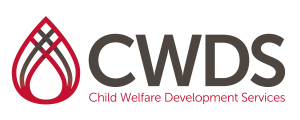CWDS Curriculum
Comprehensive Assessment Tools Training
Level: Advanced Practice – Lineworker, Supervisor
Credits: 6
Intended Audience: New and current social workers and supervisors in counties that use the Comprehensive Assessment Tools (CAT) for global assessment in child welfare cases
Intended Objectives:
- Identify how the Comprehensive Assessment Tools integrate elements of the
- Recommended Statewide Safety Assessment System into assessment practice
- Understand that ongoing assessment of safety, risk and protective capacity is necessary throughout a family’s involvement with the child welfare system
- Recognize elements of culturally sensitive comprehensive assessments
- Recognize the elements of strength-based comprehensive assessments
- Value how family engagement, strength base practices and utilized when completing the CAT
Topics Include:
- Introduction to the history of development of the CAT tools
- Review of the CAT Tools
- Application via a case scenario of the CAT tools
- Incorporation of child welfare values of family engagement, strength based practices in utilizing the CAT Tools
CalSWEC Competencies Addressed:
1.3 Student demonstrates the ability to conduct an ethnically and culturally competent assessment of a child and family and to develop an effective intervention plan.
1.6 Student understands the influence and value of traditional, culturally based childrearing practices and uses this knowledge in working with families.
2.2 Student is able to critically evaluate the relevance of commonly utilized assessment criteria and intervention models in terms of their usefulness with diverse ethnic and cultural populations.
3.2 Student demonstrates the ability to perform a preliminary safety assessment and to monitor the safety of the child through ongoing assessment of risk.
3.3 Student is able to identify the major family, health, and social factors contributing to child abuse and neglect, as well as positive factors that act to preserve the family and protect the child.
3.7 Student is able to gather, assess, and present pertinent information from interviews, case records, and collateral sources in evaluating an abuse or neglect allegation and making effective referrals for services or further evaluation.
3.8 Student demonstrates the ability to respectfully relate to, engage, and assess family members from a strengths-based “person in environment” perspective, and to develop and implement a case plan based on this assessment.
4.3 Student works collaboratively with biological families, foster families, and kin networks, involving them in assessment and planning and helping them access
services and develop coping strategies.
Assessment and Investigation



